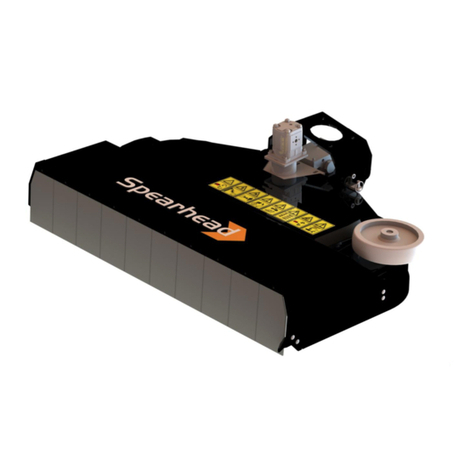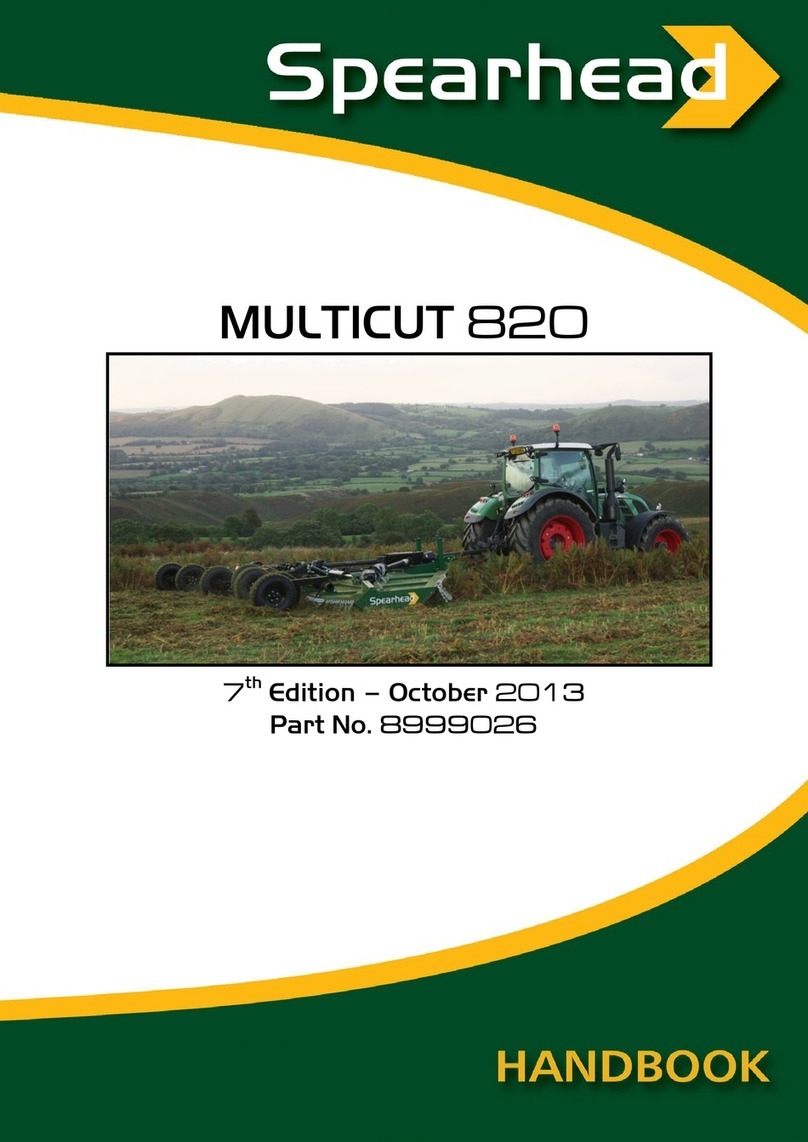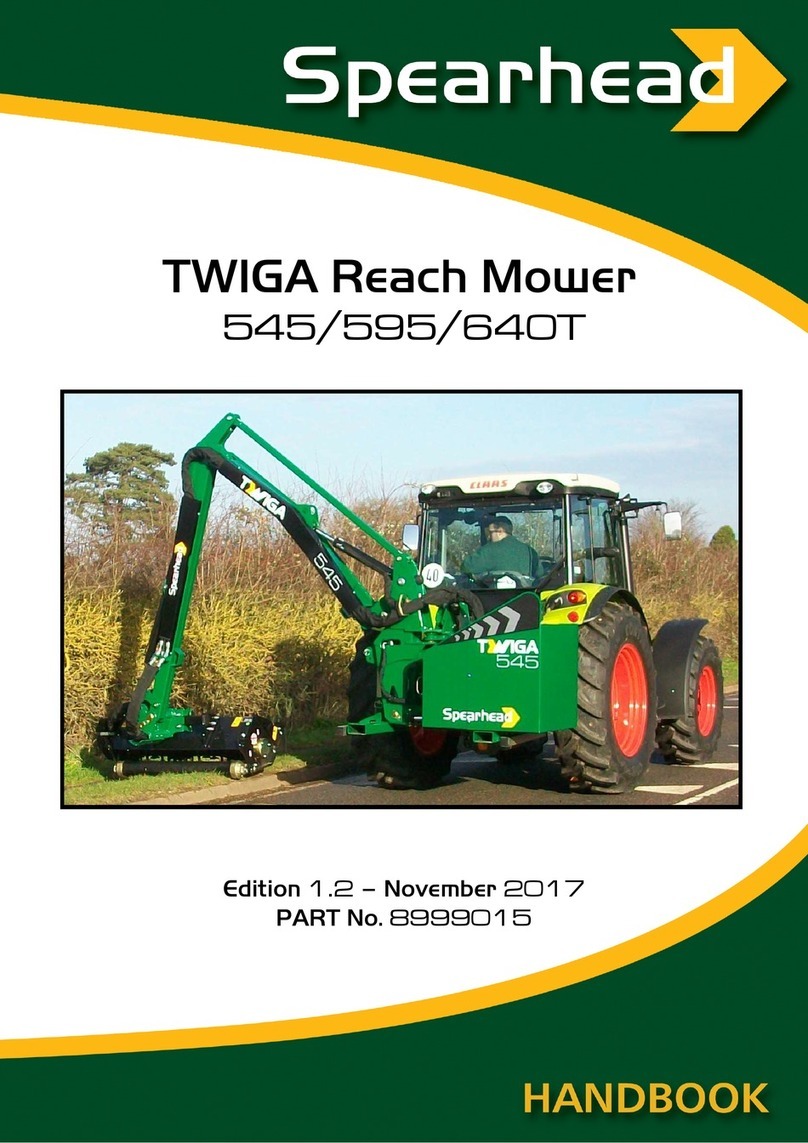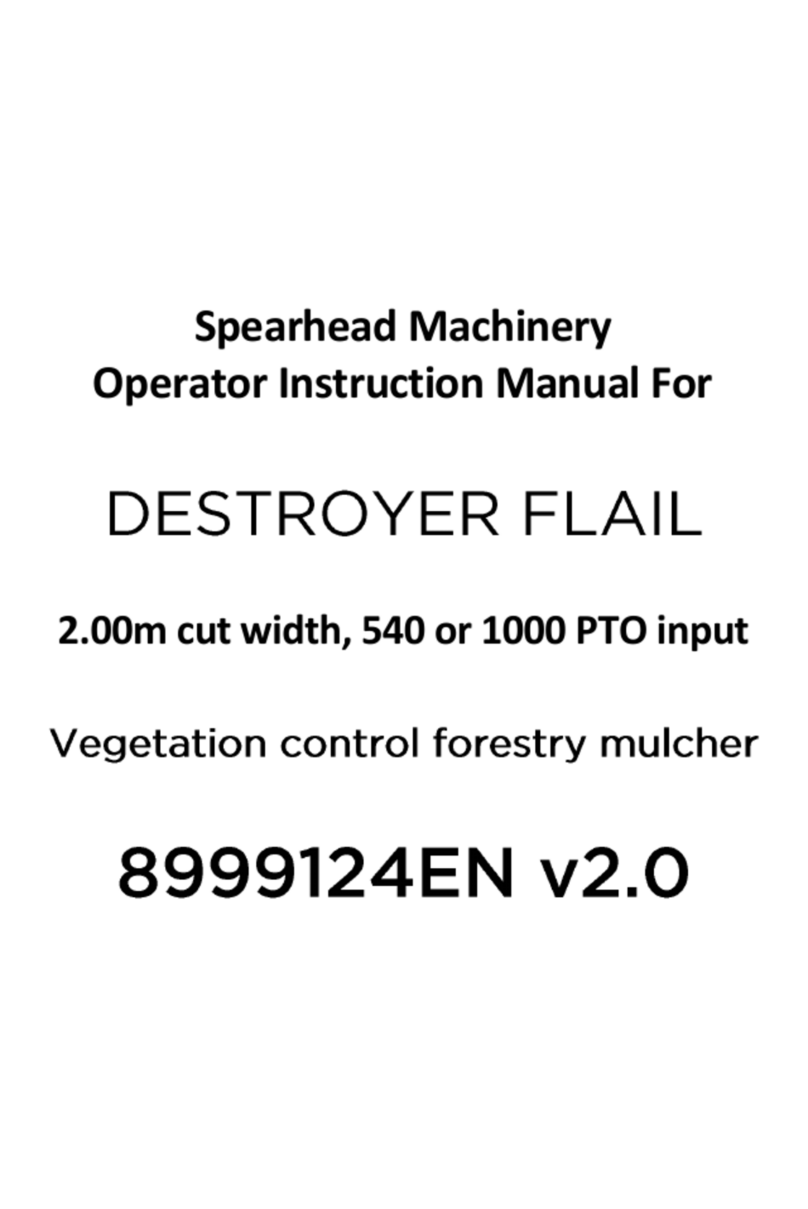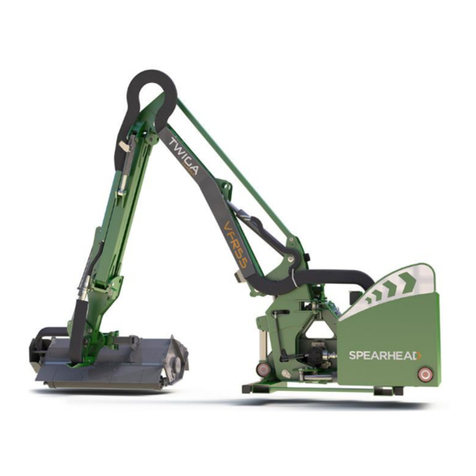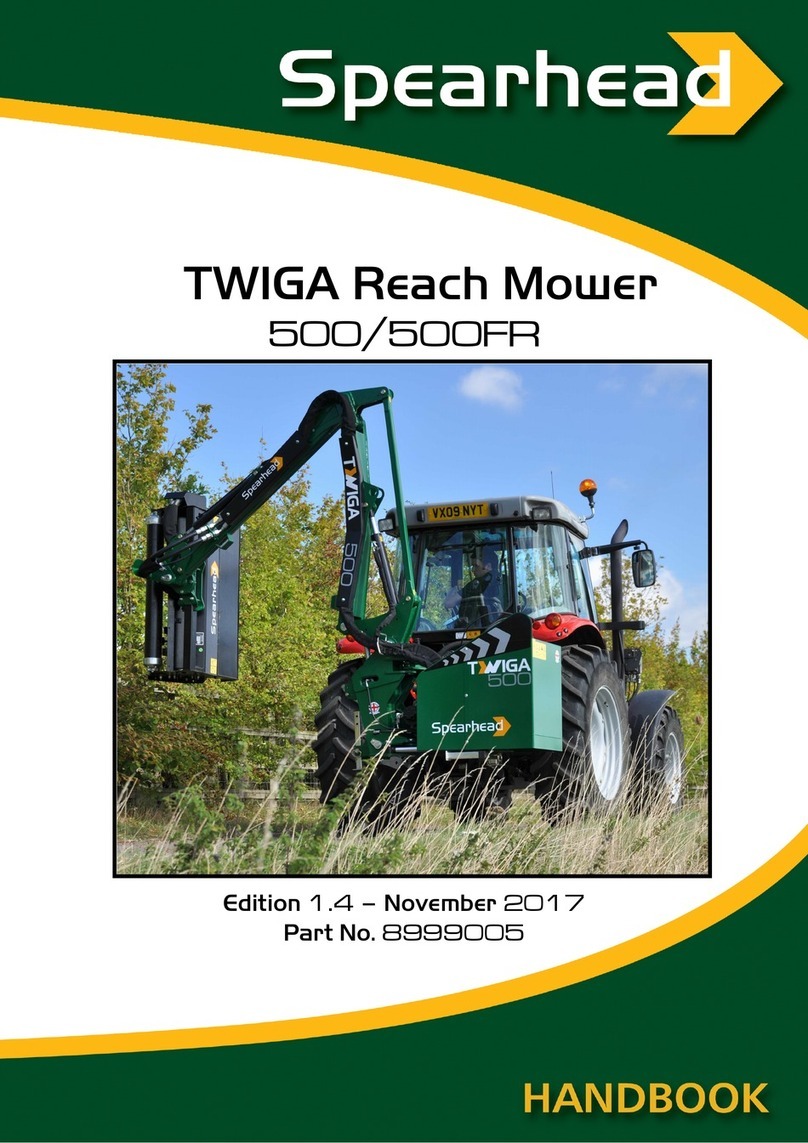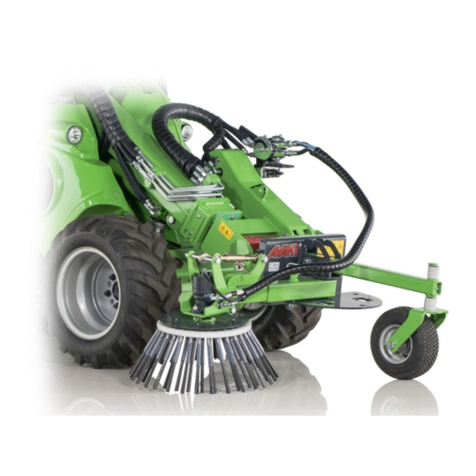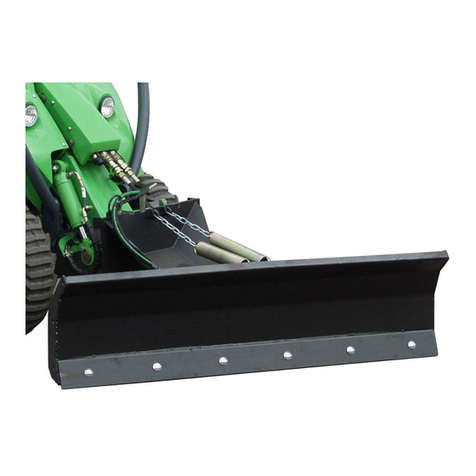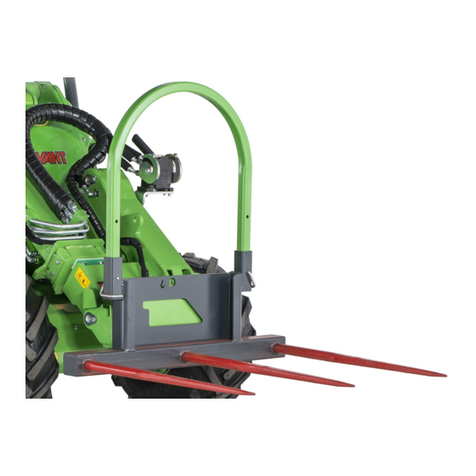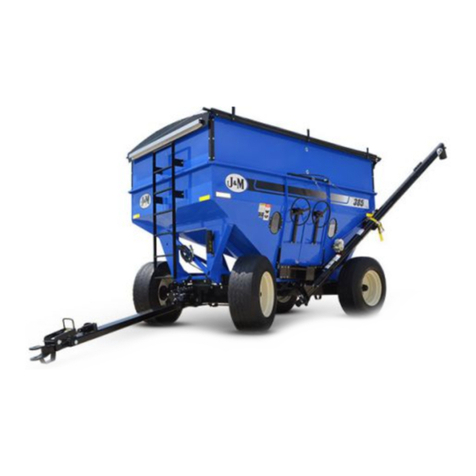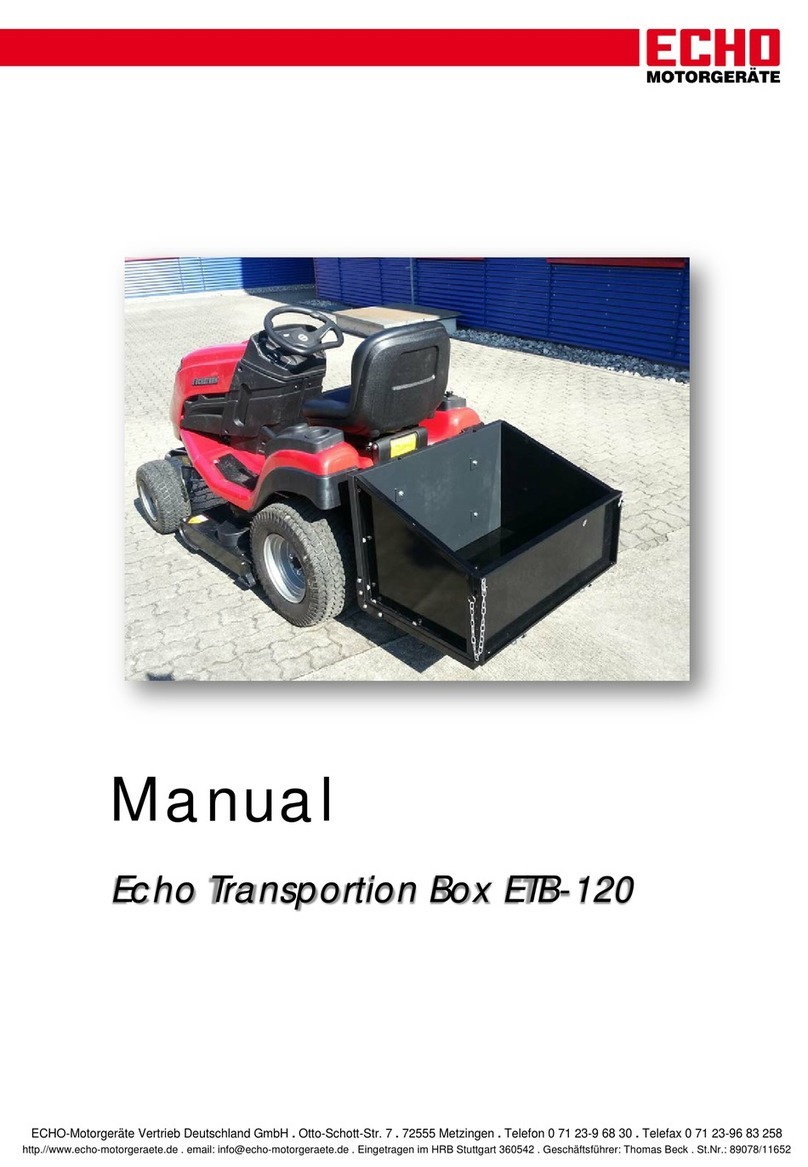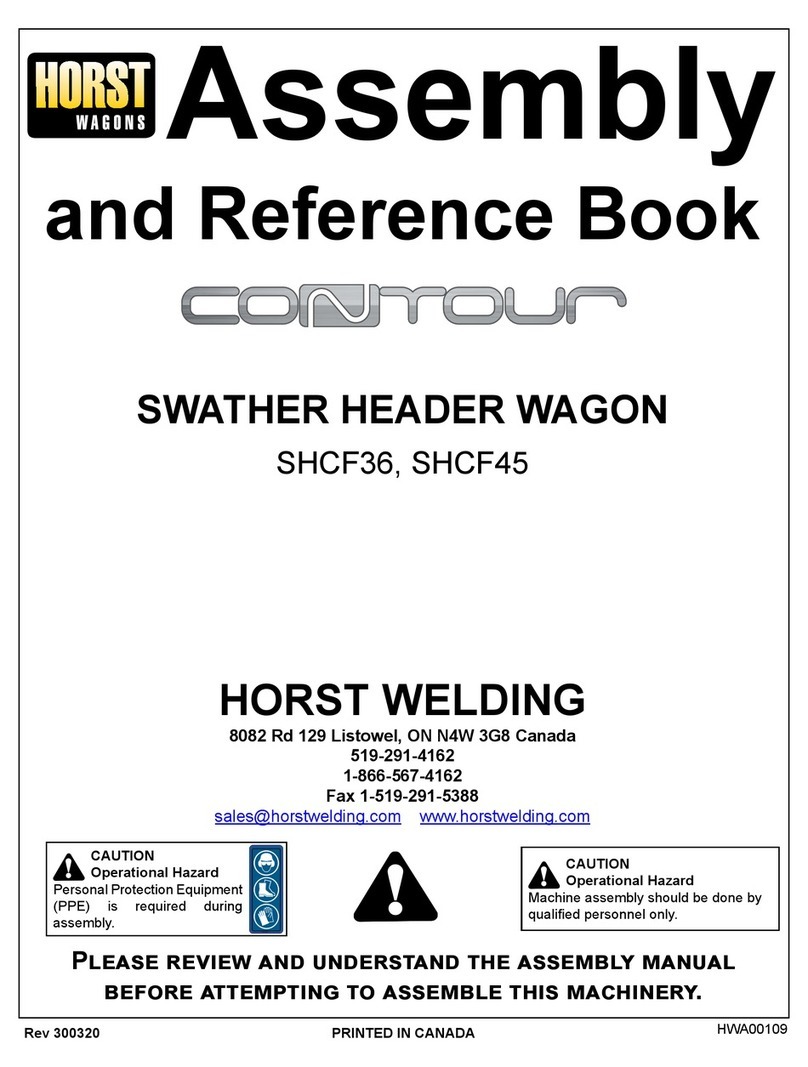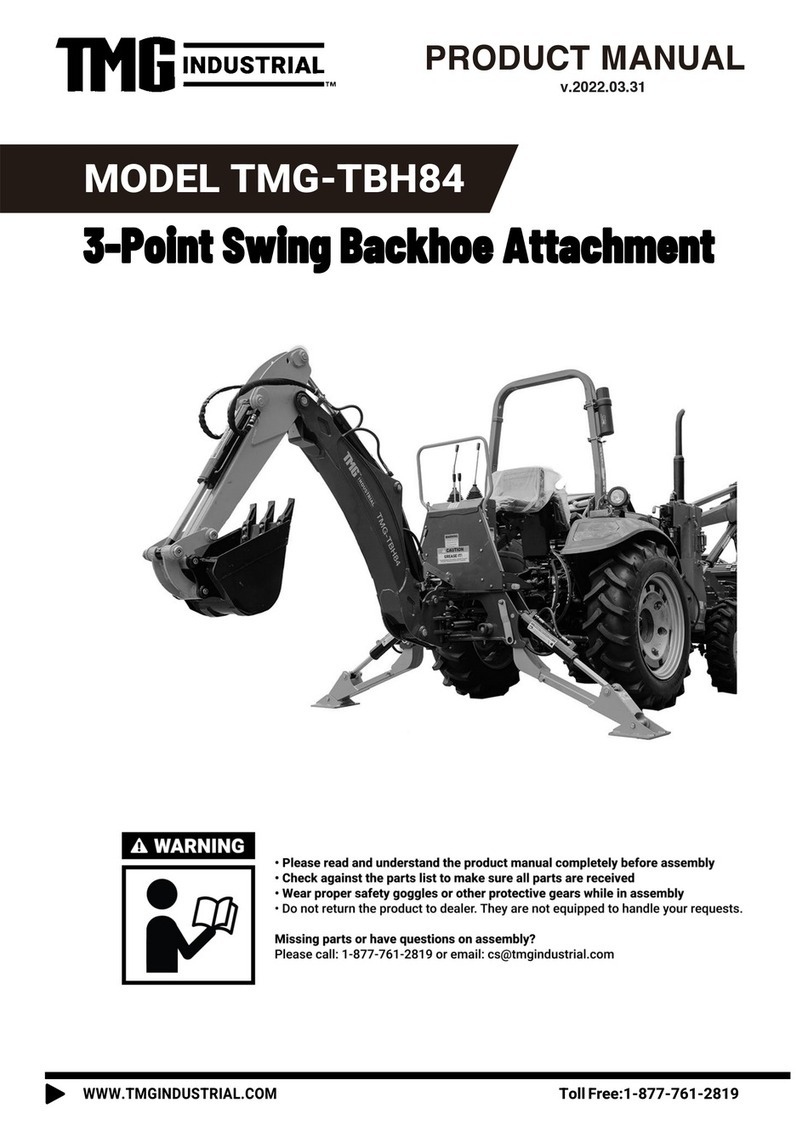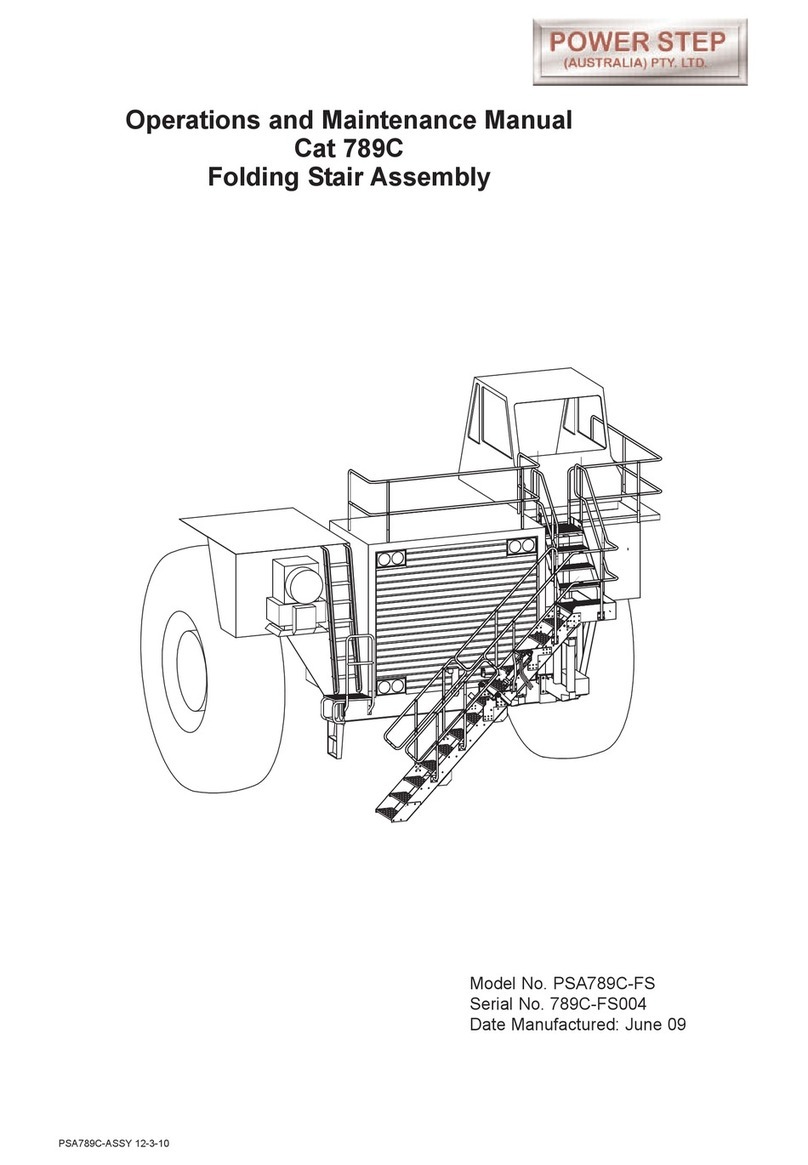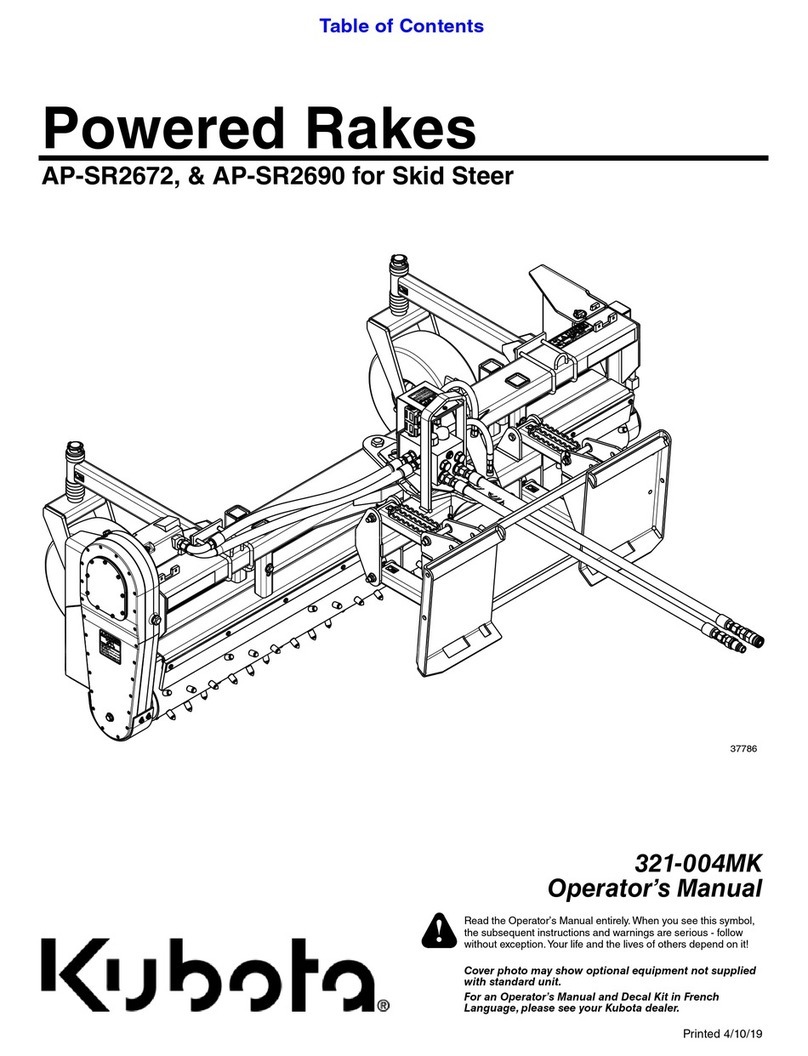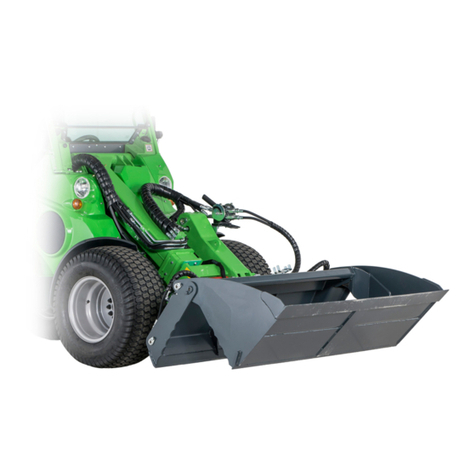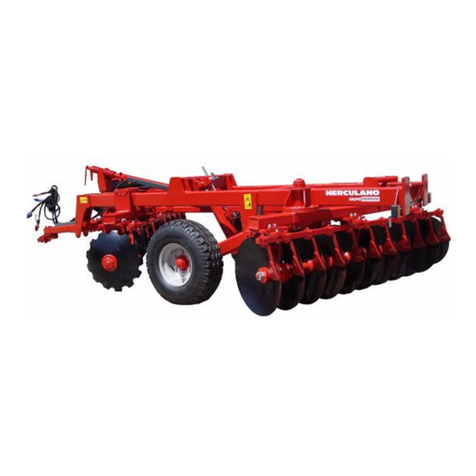Spearhead TWIGA FLEX 567 User manual

TWIGA FLEX
0
TWIGA FLEX
S67/S74/T80/T89
Edition 1.8 –December 2020
PART No. 8999067

TWIGA FLEX
1
IMPORTANT
VERIFICATION OF WARRANTY REGISTRATION
DEALER WARRANTY INFORMATION & REGISTRATION
VERIFICATION
It is imperative that the selling dealer registers this machine with Spearhead
Machinery Limited before delivery to the end user –failure to do so may affect the
validity of the machine warranty.
To register machines, go to the Spearhead Machinery Limited web site at
www.spearheadmachinery.com, log onto ‘Dealer Inside’ and select the
‘Machine Registration button’which can be found in the Service Section of the
site. Confirm to the customer that the machine has been registered in the section
below.
Should you experience any problems registering a machine in this manner please
contact the Spearhead Service Department on 01789 491867.
Registration Verification
Dealer Name:
……………………..…………………………………………………………….
Dealer Address:
…….………………………………………………………………………….
Customer Name:
……………………..…………………………………………………………
Date of Warranty Registration:
……/……/...…… Dealer Signature: ………………..……
NOTE TO CUSTOMER / OWNER
Please ensure that the above section has been completed and signed by the
selling dealer to verify that your machine has been registered with Spearhead
Machinery Limited.
IMPORTANT: During the initial ‘bedding in’ period of a new machine it is the
customer’s responsibility to regularly inspect all nuts, bolts and hose
connections for tightness and re-tighten if required. New hydraulic
connections occasionally weep small amounts of oil as the seals and joints
settle in –where this occurs it can be cured by re-tightening the connection
–refer to torque settings chart below. The tasks stated above should be
performed on an hourly basis during the first day of work and at least daily
thereafter as part of the machines general maintenance procedure.
CAUTION: DO NOT OVER TORQUE HYDRAULIC FITTINGS AND
HOSES

TWIGA FLEX
2
TORQUE SETTINGS FOR HYDRAULIC FITTINGS
HYDRAULIC HOSE ENDS
PORT ADAPTORS WITH BONDED SEALS
BSP
Setting
Metric
BSP
Setting
Metric
1/4”
18 Nm
19 mm
1/4”
34 Nm
19 mm
3/8”
31 Nm
22 mm
3/8”
47 Nm
22 mm
1/2”
49 Nm
27 mm
1/2”
102 Nm
27 mm
5/8”
60 Nm
30 mm
5/8”
122 Nm
30 mm
3/4”
80 Nm
32 mm
3/4”
149 Nm
32 mm
1”
125 Nm
41 mm
1”
203 Nm
41 mm
1.1/4”
190 Nm
50 mm
1.1/4”
305 Nm
50 mm
1.1/2”
250 Nm
55 mm
1.1/2”
305 Nm
55 mm
2”
420 Nm
70 mm
2”
400 Nm
70 mm

TWIGA FLEX
3
Contents
General Information
Introduction 5
Specification 6
Safety
Safety Recommendation 7
Overhead Power Lines 9
Safety 11
Warning Signs 11
Road Work Guidelines 11
Lighting Kits 13
Training 13
Tractor Requirements 13
Lifting Points 13
Installing your Machine
Attaching your Machine to the Tractor –Using 3 Point Linkage 13
Attaching your Machine to the Tractor - Using Axle Mounting 17
Attaching your Machine to the Tractor - Using Integrated Axle Mounting 19
Running up your Machine 21
Removing from the Tractor 22
Hydraulic Proportional Controls - 2SV 23
Hydraulic Proportional PRO PILOT Controls - 3SV 24
Electric Proportional PRO PILOT Controls - 3SV 24
PRO PILOT Switch Box 25
Operation Warnings 26
Moving into Transport Position 28
Operation 30
Options
Oil Cooler 32
Autoflex 32
Head Float 33
Arm Float 34
Debris Blower 35
Hydraulic Rear Roller 36
Autopilot 37
Telescopic Arm 42

TWIGA FLEX
4
Service & Maintenance
Daily Grease Points 43
Torque Settings 44
Hydraulic Hoses 45
Oil Supply 46
Filtration Maintenance 46
Pin & Bushes 47
Storage 47
Regular Service Chart 48
Diagnostics
Pump & Motor Failure Prevention 48
Trouble Shooting 49

TWIGA FLEX
5
Introduction
The TWIGA FLEX is a very robust high capacity reach mower that is easy to
operate and maintain. To ensure trouble-free operation this manual should be
carefully studied.
The term Left and Right hand applies to the machine when coupled to the
tractor and viewed from the rear, this also applies to the tractor.
Important Note
The information contained in this manual is correct at the time of publication.
However, in the course of constant development, changes in specification are
inevitable. Should you find the information given in this book different to the
Machine it relates to please contact the “After Sales Department” for advice.
Please ensure that this manual is handed to the operator before using the
machine for the first time. The operator must fully understand the contents
of this manual before using this machine.
(If the machine is resold the Manual must be given to the new owner.)

TWIGA FLEX
6
Specification
S67
S74
T80
T89
Weight inc. Oil (Kg)
2150
TBA
2550
2660
Tractor horse power
100-130
120-150
120-150
140-170
Min. tractor weight (Kg)
4500
4750
5000
6000
Oil tank capacity (ltr)
220
220
220
220
Reach A (m)
6.7
7.4
8.0
8.9
Reach B (m)
6.5
7.2
7.8
8.7
Reach C (m)
4.8
5.5
6.1
7.0
Reach D (m)
6.6
7.3
7.9
8.8
Reach E (m)
5.1
5.8
6.4
7.3

TWIGA FLEX
7
Safety Recommendations
Beware of the following Potential Dangers associated with the use of this
machine:
•Becoming trapped when hitching or unhitching
•Tractor overbalancing when arm is extended
•Electrocution due to hitting overhead power lines
•Getting caught on rotating power take off (PTO)
•Being hit or caught by any moving part, e.g. belts, pulleys, arms, cutting
head
•Being hit by flying debris or machine parts due to machine damage
•Machine overbalancing when not in use
•Injection of high-pressure oil from damaged couplings or hydraulic
hoses
•Accidents due to collision with other machines, or debris left on road
Always
•Ensure the operator has read this handbook and has been trained to
use the machine.
•Ensure all cab safety guards are in place and all tractor windows
closed.
•Before leaving the tractor cab always ensure that the flail head is firmly
on the ground, no weight is on the machine’s hydraulics and the rotor
has stopped spinning.
•Check that all guards are properly fitted and there are no damaged or
loose parts. Particular attention should be given to the flails to ensure
they are not damaged, cracked or missing.
•Inspect work area for wire, steel posts, large stones and other
dangerous materials and remove before starting work.
•Beware of the danger of overhead power cables. The operator must
be aware of the maximum height and reach of the machine when
working under power cables. For more information contact the Health
and Safety Executive or your local power company.
•Ensure that all warning labels are always visible and that they are not
damaged, defaced or missing.
•Lower the head to the ground when parking up
•Fit locking pins to slew and height before transport and before
unhitching when applicable.
•Wear ear defenders if operating without a quiet cab or with the cab
windows open.
•Ensure tractor guards are fitted correctly and are undamaged
•Work at a safe speed, considering terrain, passing vehicles and
obstacles
•Ensure that the tractor meets the minimum weight recommendations of
the machine manufacturer and that ballast is used if necessary
•Check that machine fittings and couplings are in good condition

TWIGA FLEX
8
•Follow the manufacturer’s instructions for attachment and removal of
machine from the tractor are warning signs to alert others to the type of
machine working in the vicinity. Signs should be placed at both ends of
the work site and should be in accordance with Department of
Transport recommendations.
•Ensure flails are of the type recommended by the manufacturer, are
securely fitted and are undamaged.
•Ensure hydraulic pipes are correctly routed to avoid damage from
chafing, stretching, pinching or kinking.
•Disengage the machine, stop the engine and remove the key before
leaving the tractor cab for any reason.
•Clean up any debris left at the work site.
•Ensure that when you remove the machine from the tractor it is
secured in a safe position using the stands provided.
Never
•Never operate the machine with other people present, as it is possible
for debris, including stones, to be discharged from the front and rear of
the flail head.
•Never operate the machine until you have read and understood the
relevant Handbook and are familiar with the controls.
•Never use a machine that is poorly maintained or has guards that are
damaged or missing
•Never allow an inexperienced person to operate the machine without
supervision.
•Never use or fit a machine onto a tractor if it doesn’t meet the
manufacturer’s specification.
•Never use a machine if the hydraulic system shows signs of damage.
•Never attempt to detect a hydraulic leak with your hand, use a piece of
card.
•Never allow children to play on or around the machine at any time.
•Never attempt any maintenance or adjustment without first disengaging
the PTO, lowering the head to the ground, stopping the tractor engine
and applying the tractor parking brake.
•Never leave the cab without removing the ignition key.
•Never operate the tractor or any controls from any position other than
from the driving seat.
•Never stop the engine with the PTO engaged.
•Never operate with flails missing.
•Never operate PTO above recommended speed for your machine, 540
R.P.M. flail head, 150 R.P.M. cutter-bar.
•Never operate with wire around the rotor. Stop immediately.
•Never use the head at an angle, which may throw debris towards the
cab.
•Never attempt to use the machine for any purpose other than that it
was designed for.
•Never transport with the PTO engaged
•Never enter the working area of the machine (risk of injury!)
•Never transport with the controls live, always turn off electrical isolator
switch (red) and disconnect supply.

TWIGA FLEX
9
Overhead Power Lines
It cannot be stressed enough the dangers involved when working in the vicinity of
Overhead Power Lines (OHPLs). Some of our machines are capable of reach in
excess of 8 metres (26’); they have the potential to well exceed, by possibly 3 metres
(9’ 9”), the lowest legal minimum height of 5.2 metres from the ground for 11,000 and
33,000 volt power lines.
Remember electrocution can occur without actually coming into contact with a power
line as electricity can ‘flashover’ when machinery gets close to it.
WARNING: All operators must read the following information and be
aware of the risks and dangers involved when working in the vicinity
of Overhead Power Lines (OHPLs).
Wherever possible the safest option is always to avoid working in areas close to
OHPLs.
Where unavoidable, all operators must perform a risk assessment and implement a
safe procedure and system of work –see following page for details.
All operators should perform a risk assessment before operating the machine within
10m horizontal distance of any OHPLs.
Minimum Heights for Overhead Power Lines
Absolute Minimum Exclusion Zones for Specific Overhead Power Lines

TWIGA FLEX
10
Definitions of Exclusion Zones
Risk Assessment
Before starting to work near OHPLs you should always assess the risks. The
following points should be observed;
Know the risks of contacting OHPLs and the risk of flashover.
Find out the maximum height and maximum vertical reach of your machine.
Find out the location and route of all Power Lines within the work area.
Find out the operating voltage of all Power Lines within the work area.
Contact the local Distribution Network Operator (DNO) who will be able to advise
you on the operating voltage, safe minimum clearance distance for working and
additional precautions required.
Never attempt operate the machine in an exclusion zones.
Always work with extreme caution and plan your work ahead to avoid high risk
areas.
If doubt exists do not work in the area –never risk the safety of yourself or others.
Emergency Action for Accidents Involving Electricity
•Never touch an overhead line - even if it has been brought down by machinery, or
has fallen. Never assume lines are dead.
•When a machine is in contact with an overhead line, electrocution is possible if
anyone touches both the machine and the ground. Stay in the machine and lower
any raised parts in contact or drive the machine out of the lines if you can.
•If you need to get out to summon help or because of fire, jump out as far as you
can without touching any wires or the machine - keep upright and away.
•Get the electricity company to disconnect the supply. Even if the line appears
dead, do not touch it - automatic switching may reconnect the power.
Further information and leaflets on this and other agricultural safety subjects
are available on the ‘Health & Safety Executive’ website at the following
address: www.hse.gov.uk/pubns/agindex.htm

TWIGA FLEX
11
Safety
Operating, servicing and maintaining this equipment can expose you to
chemicals including gasoline, diesel fuel, lubricants, petroleum products,
engine exhaust, carbon monoxide, and phthalates, which are known to the
State of California to cause cancer and birth defects or other reproductive
harm. To minimize exposure, avoid breathing exhaust, do not idle the engine
except as necessary, service your vehicle in a well-ventilated area and wear
gloves or wash your hands frequently when servicing your vehicle. Battery
posts, terminals and related accessories contain lead and lead compounds,
chemicals known to the state of California to cause cancer, birth defects or
other reproductive harm. For more information go to
www.P65Warnings.ca.gov. This website, operated by California's Office of
Environmental Health Hazard Assessment, provides information about these
chemicals and how individuals may be exposed to them.
Warning Signs
You are advised to display clear warning signs to indicate the type of machine
when working in public places. The signs should be carefully placed at either
end of the work site to give advanced warning of the hazard.
Contact your local Highways Authority or Department of Transport for more
information.
Roadwork Guidelines:
•On two-way roads, one set of signs should face the traffic in each
direction.
•Work should be within 1 mile of the signs.
•Work only when visibility is good and at times of low risk, e.g. NOT
during rush hour.
•Vehicles should show an amber flashing light.
•Vehicles should be conspicuously coloured.
•Debris should be removed from the road or path at regular intervals
and the operator should wear high visibility clothing.
•Collect all warning signs promptly when the job is finished.

TWIGA FLEX
12
Training
It is the responsibility of the Spearhead dealer to provide instruction on the
safe installation, operation and maintenance of the machine in the first
instance. Further training is available from Spearhead Machinery Ltd on
request, at cost.
Tractor Requirements
•Check your Tractor size and minimum weight on the Specification table
•Before hitching, ensure position control is selected. Do not attempt to
hitch in draft control.
•Set wheel width as wide as possible.
•Ballast weight is to be fitted within tractor manufacturer’s recommended
requirements
•Check chains and stabilisers must be in good working order to hold the
machine firmly. Do not operate without checking chains and stabilisers
are tight.
•Spearhead particularly recommend ‘turn buckle’ type stabiliser.
•Set linkage lift rods to an equal length
•Certain machines require a 12V fused electric supply that is controlled
by the tractor’s ignition key.
•Spearhead particularly recommend three point linkage of ball end type,
we do not advise the use of claw type hitching. The quick release
latches should be checked, if worn or insecure they may cause
accidental damage or personal injury if the machine becomes
detached.
•Ensure tractor link arms can be isolated from accidental lifting.
Lighting Kits
For additional safety, rear mounted lighting kits are already fitted as standard.
For more detailed information, contact the Department of Transport or your
local Highways Authority.
Pallet Fork Lifting Points

TWIGA FLEX
13
Attaching Machine to Tractor –3 Point Linkage
1. Reverse tractor to machine and
attach lower links.
2. Fit stabiliser bracket into top link
clevis and fit top link. The standard
link comes with a Cat III hole plus a
Cat III to Cat II reducing bush, a
28mm bracket is available on request.
3. Fit stabiliser tubes between A frame
and stabiliser bracket. Ensure the
tubes are free to slide, do fit locking
pins.

TWIGA FLEX
14
4. Raise machine to required height.
Both P.T.O. shafts should be roughly
in-line, an upward angle of up to 17° is
acceptable to ensure adequate
clearance.
5. Adjust the top link so that the
machine sits vertically.
6. Fit locking pins to stabiliser tubes,
then the linkage can be lowered so
that the weight of the machine is taken
by the stabilisers. It is essential that
both tubes are set to equal lengths,
more than one attempt may be
required to achieve the correct height
as the machine settles on the
stabilisers.

TWIGA FLEX
15
7. It is recommended that the controls
are mounted in-place of the seat
armrest on the side of the cutting
head. A pivoting bracket is supplied
with every machine, if additional
brackets are required contact your
local dealer. A 12v/30Amp power
supply will be required.
8. Ensure the engine is switched off and then fit the P.T.O. shaft. If fitting for
the first time follow instructions below to cut P.T.O. to length. Ensure both
sections are cut to equal lengths
9. Remove slew locking pin.

TWIGA FLEX
16
9. Raise leg stands to ensure they
don't get damaged. Adjust check
chains ensure the machine is
secure and cannot swing from
side to side.
10. Use only tractors with safety glass.
If windows are not laminated safety
glass, polycarbonate glazing must be
fitted between operator and cab
meshing. Shape mesh to cover all
windows that the driver will look
through to view flail head in any
operating position. Mesh can be
retained by springs and clips supplied,
but it is the operator’s responsibility to
ensure guarding is firmly in place.
Warning
Avoid raising the tractor linkage once the stabiliser bars are locked in place.
Always lower the tractor linkage and allow all the weight to be carried by the
stabiliser frame. Failure to observe this warning will result in bending the stabiliser
bracket. When operating the machine’s controls do so only when seated in the
tractor cab. Do not allow anyone to stand on or amongst linkage for any reason

TWIGA FLEX
17
Attaching Machine to Tractor –Axle Mounting with
Sub-Frame
1. Mount axle brackets as instructed
on separate fitting sheet specific to
your tractor type.
2. Detach tractor draft links.
4. Assemble sub frame to suit axle width
1m or 1.1m, mount sub frame assembly
to your machine using bottom pin holes.
3. Fit lift-in hitch assembly

TWIGA FLEX
18
Please Note
6. Open catch
5. Offer up frame to tractor and adjust to
give required length. Distance “X” to be
kept to the minimum ensuring the machine
is close coupled, as a guide set the same
as original. Attach tractor lift links to frame
with suitable pins.
Note: The hole sizes may not match the
tractor links, this will not matter as the
machines weight will be carried on the
stabilisers.
7. Ensure top link is fitted to prevent
machine from tipping over before raising. Lift
sub frame until it engages in the catches.
Note: It is best to mount the sub frame to the
tractor first.
8. Insert latch locking pin

TWIGA FLEX
19
Attaching Machine to Tractor –Integrated Axle Mounting
1. Fit the brackets and latches as
described in the previous section.
2. Measure the distance between the latch point and the lower link ball (L),
L
This manual suits for next models
3
Table of contents
Other Spearhead Tractor Accessories manuals
Popular Tractor Accessories manuals by other brands

Femco
Femco WEATHERBRAKE 2175 instructions

Craftsman
Craftsman 486.248476 Operator's manual
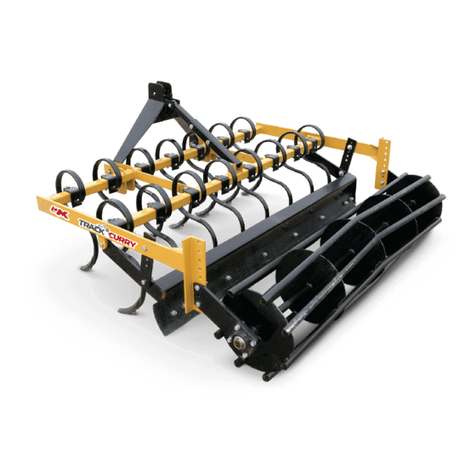
MK Martin
MK Martin TRACK CURRY Operator's & parts manual
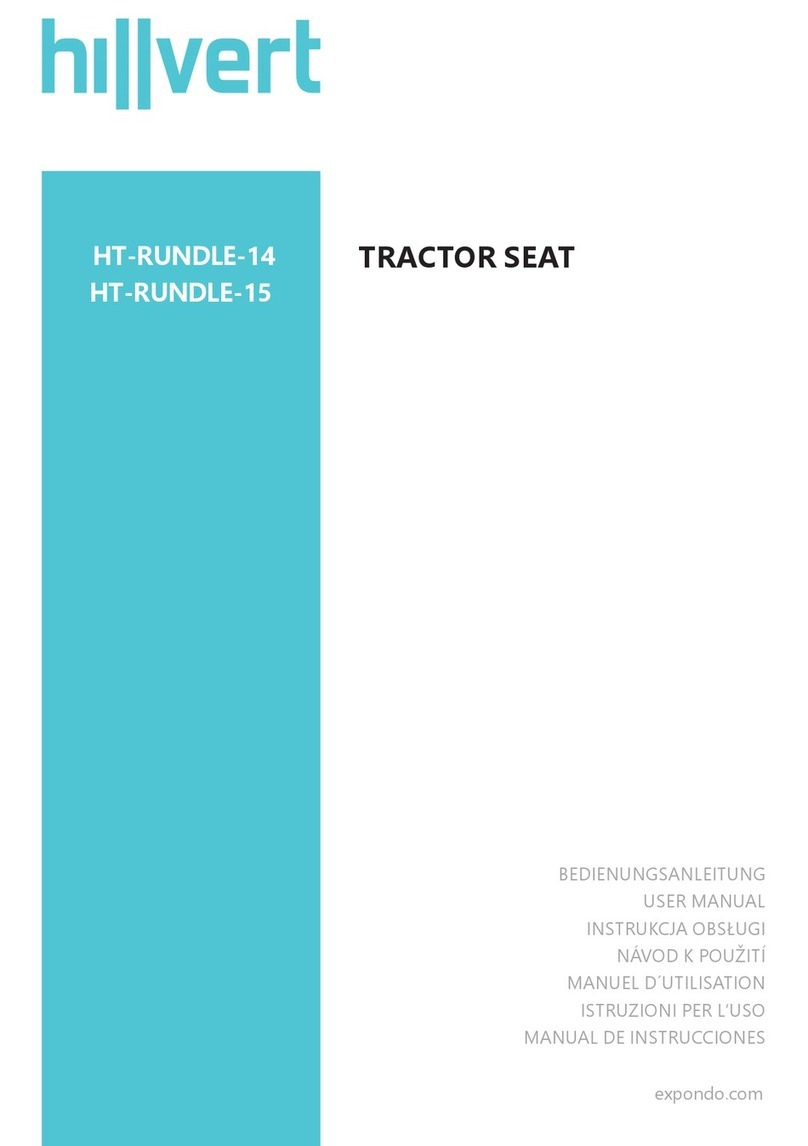
hillvert
hillvert HT-RUNDLE-14 user manual
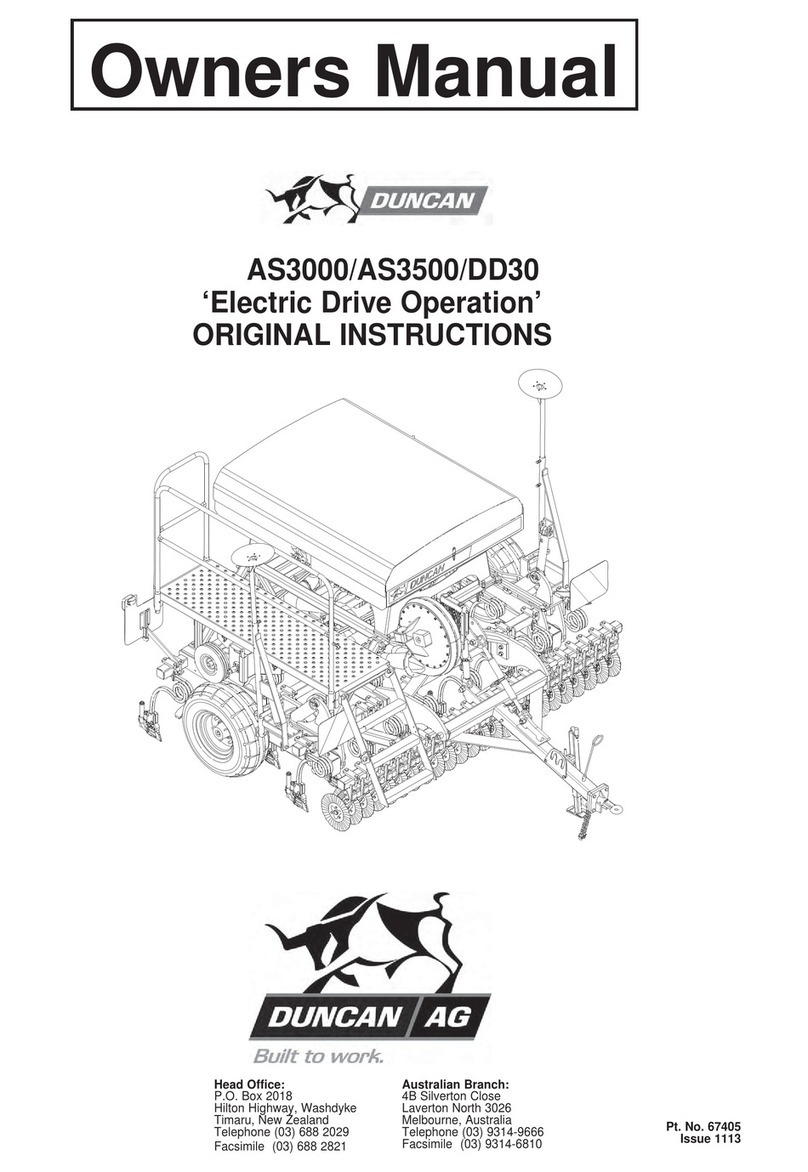
Duncan
Duncan Renovator AS3000 owner's manual
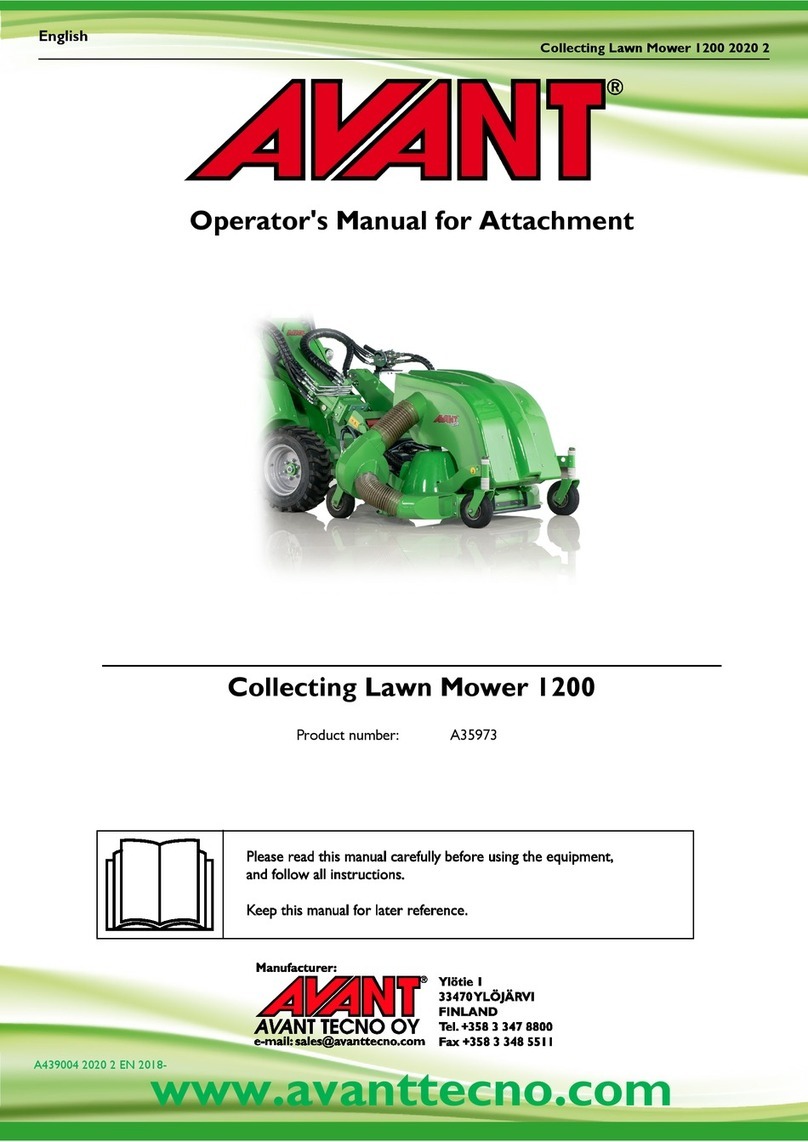
Avantco
Avantco Collecting Lawn Mower 1200 Operator's manual for Attachment
